

Catch Fish with
Mike Ladle
Information Page
SEA FISHING
For anyone unfamiliar with the site always check the FRESHWATER, SALTWATER and TACK-TICS pages. The Saltwater page now extends back as a record of over several years of (mostly) sea fishing and may be a useful guide as to when to fish. The Freshwater stuff is also up to date now. I keep adding to both. These pages are effectively my diary and the latest will usually be about fishing in the previous day or two. As you see I also add the odd piece from my friends and correspondents if I've not been doing much. The Tactics pages which are chiefly 'how I do it' plus a bit of science are also updated regularly and (I think) worth a read (the earlier ones are mostly tackle and 'how to do it' stuff).
Maggot heaven!
The best way to make the most of your shore fishing is to spend lots of time walking and looking. I'm fortunate in having a number of pals who, like me, do a fair amount of legwork, know what to look for and are keen to swap information. One of the key features on the Purbeck coast is the presence of seaweed middens and we always like to know where the biggest piles of old weed are. Now you might think it would be simple. The places where seaweed is cast up by rough seas are, more or less, always the same. However, several factors are less predictable. The exact position and quantity of weed varies according to the wind direction and force when it was cast up, often several days before. The state of the weed in terms of rotting down and accumulating maggots depends on how long it has been on the shore, how high it is piled and whether there has been any more rough weather since it was deposited. Lastly, a good deal depends on how hot and dry the weather has been since the weed was dumped, baking hot sunshine can dry everything to a crisp and then - no maggot-food=no maggots=no fish!
Why do we care about insect infested weed piles? Well it all boils down to the seaweed flies which lay their eggs in the weed piles and the maggots which develop from them. I've explained this many times before but for anyone who is not familiar with the story, this is how it goes. The little, soft, white maggots live in the weed along the high water mark, they can be present in billions. Small neap tides rarely rise high enough to disturb the weed and wash maggots into the sea. On big spring tides, in contrast, the water generally reaches the weed and given the right weather will produce a slick of maggots on the surface of the sea. All things being equal a bit of a chop on the water is more likely to produce a good slick of maggots than flat calm conditions. The mullet and bass that we want to catch are well aware of this phenomenon and will gather to feed on maggots on a few of the highest spring tides. The fish probably locate the concentrations of maggots from the suspension of stinky rotting weed in the water and then they concentrate to feed where the food patches are thickest. Big, extensive, thick piles of weed will dry out more slowly and can generate vast numbers of maggots, so in these circumstances the fish may be spread along miles of shoreline. Also there is always a certain amount of longshore drift as the tide comes in so the feeding fish can be constantly on the move and you may have to follow them. On the other hand Small, locallised middens are likely to concentrate the fish in quite a tiny area and this may enhance the quality of the fishing. Slight variations in the strength and direction of the wind will dictate how far from the water's edge the fish will feed and whether they are within casting range.
We had a classic example on the recent spring tides. About a week before the first 2.0m tide (that's a big one here in Purbeck) we'd had a bit of a blow. My pal Bill went spinning just afterwards and landed a 60cm bass on a Slug-Gill his interesting comment was - "Lots of nice fresh kelp now on the beach - hope its there for the next set of big tides." We were rubbing our hands in anticipation. On the day before the first decent tide neither Bill nor I could wait so we each went down to have a look and a dabble. Neither of us caught anything but there was plenty of maggoty weed on long stretches of the shoreline. We even saw a few surface-feeding mullet - excellent!
The following evening four of us were down there. We picked what we thought would be a good stretch and began to fish as high water approached. There was lots of maggoty weed, trillions of maggots and quite a lot of feeding mullet (less than we'd hoped) and a few bass about later on the tide. I fished a maggot fly and landed mullet of 2lb and 4lb, Nigel mostly fly fished but caught his bass of 4lb on EvoStix, Bill and Dave spun and each had one or two bites. I went for an hour the following morning and landed one small (2lb) bass on a shallow diving plug - there were few surface feeding fish to be seen. That evening the four of us went again and we were joined by Glenn - on his annual holiday from Yorkshire. For some reason there were less fish about than on the preceding evening and the total catch was as follows - Mike two bass on fly rod using wet flies, Nigel one mullet on a maggot fly, Bill two bass on his Slug-Gill, Dave smashed by a decent fish on the fly. Glen one nice wrasse (3lb) and one small bass on a plug. To say that there was a carpet of drifting maggots the fish were less numerous than expected and quite difficult to tempt. Where and what will the next set of spring tides produce? I've no idea!
The high tide has soaked through the weed midden forming a pool covered in maggots.
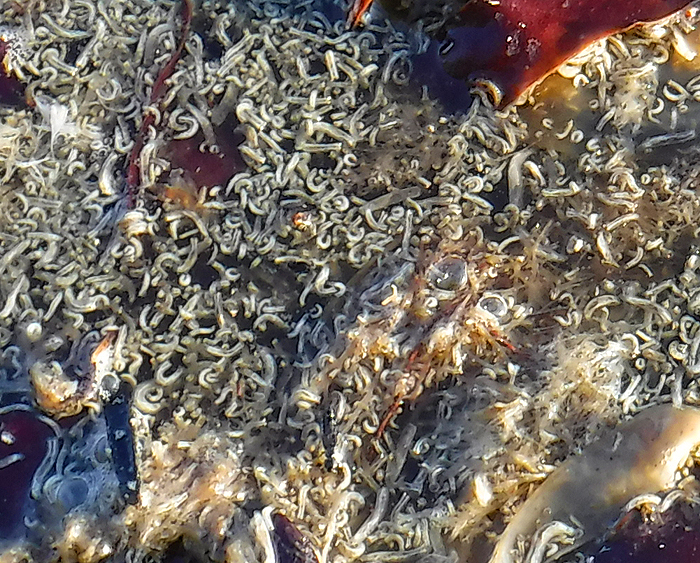
The smaller of my two fly-caught mullet.
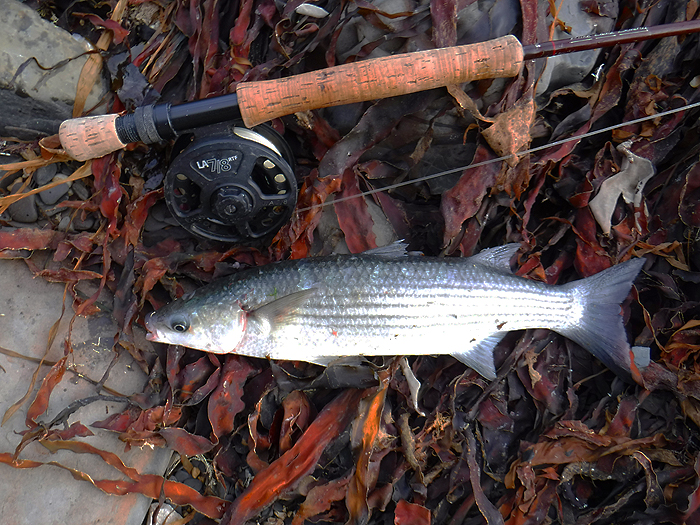
Nigel's spun bass - still a bit thin but a nice fish.
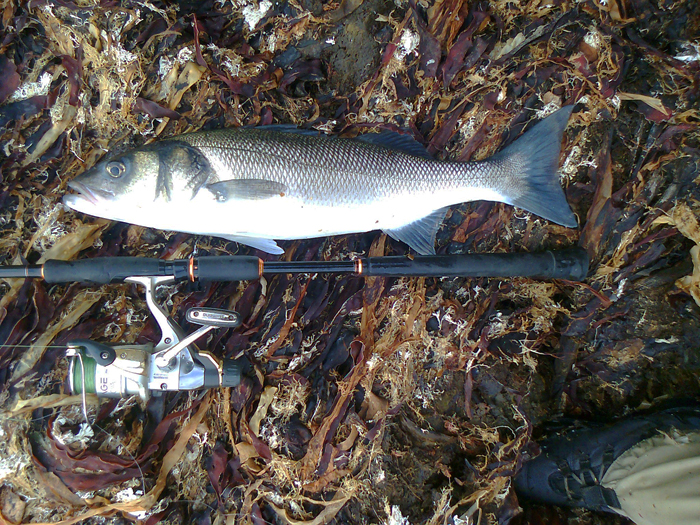
My early morning tiddler on the plug.
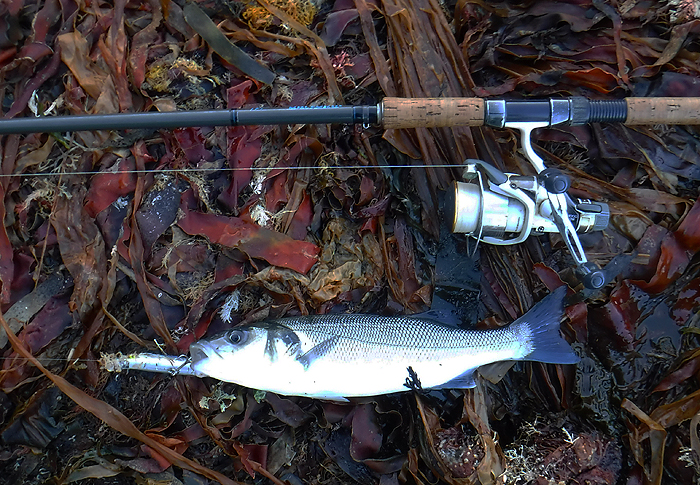
Nigel into a fish and Dave behind him - note the huge weed midden.
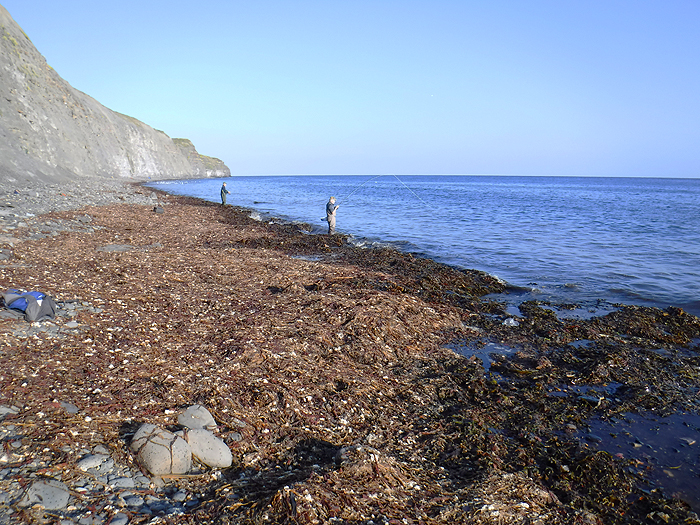
Nigel still battling.
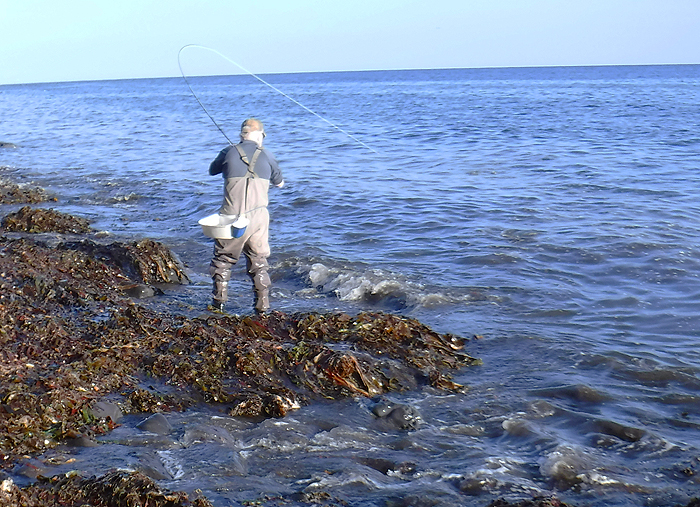
He stoops to pick up his fish.
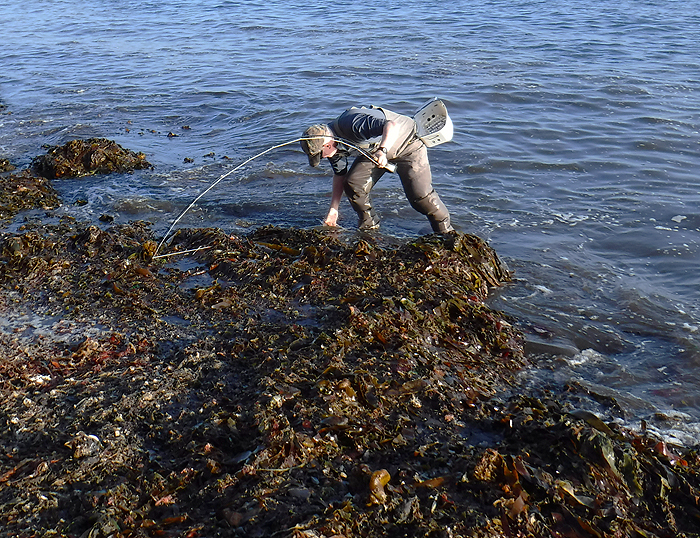
Got it! A cracking fly-caught thicklip.
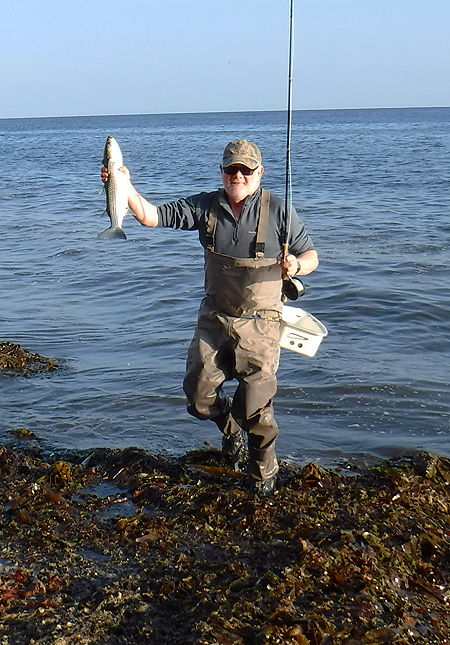
The smaller of my bass on the wet fly.
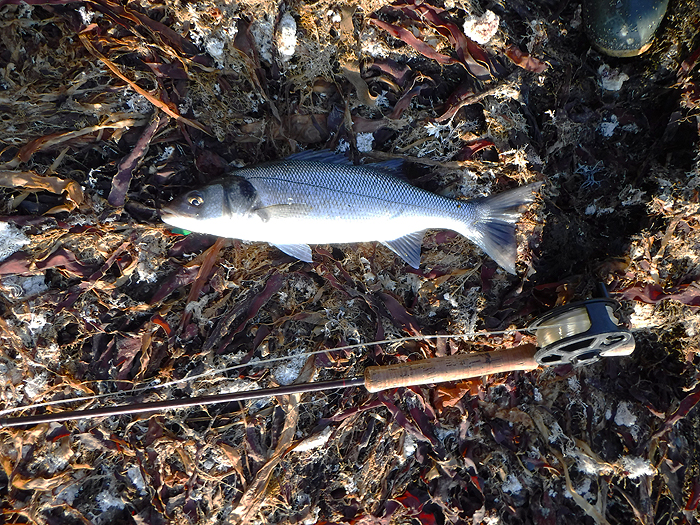
A close up of my fly in the mouth of a bass.
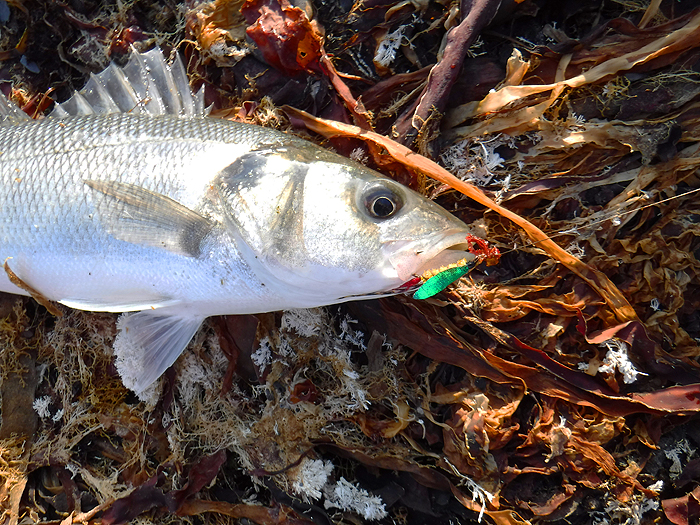
– PLEASE TELL YOUR TWITTER, FACEBOOK, EMAIL FRIENDS ABOUT THESE BOOKS.
BRAND NEW BOOK
"Fishing for Ghosts - Successful Mullet Angling"
written with David Rigden IT'S AVAILABLE FROM -ALSO THE NEW BOOK
“The Second Wave”
Written with Steve Pitts this is a SEQUEL TO THE BESTSELLER "Operation Sea Angler" IT'S AVAILABLE ON PAPER OR FOR YOUR KINDLE FROM -If you have any comments or questions about fish, methods, tactics or 'what have you!' get in touch with me by sending an E-MAIL to - docladle@hotmail.com